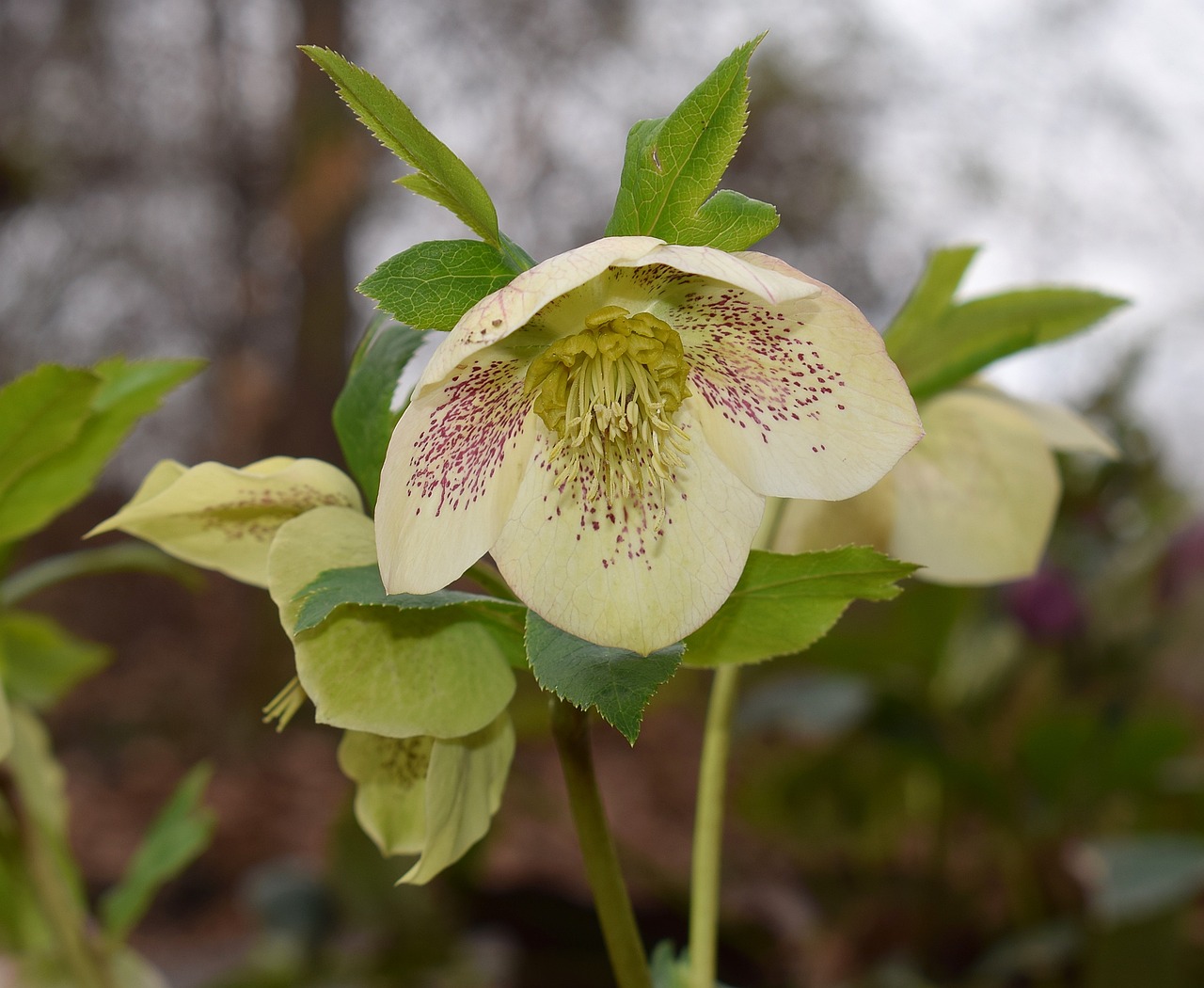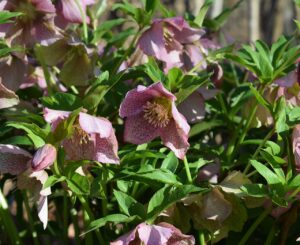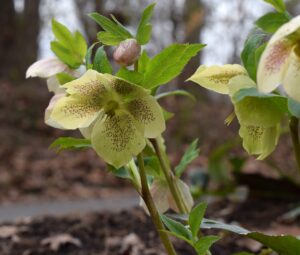Lenten Rose
Overview
The Helleborus orientalis, known as Lenten Rose, is not an actual rose but a late winter perennial from the buttercup family. This lush bloomer withstands cold, offering a garden spectacle with its large, nodding flowers and evergreen foliage when little else is in bloom.

Characteristics
Known for its resilience to cold weather, blooming in late winter with large, nodding flowers, and evergreen foliage.
Region
The Lenten Rose plant is typically found and grown in USDA zones 4 to 9.
Natural Habitat
The Lenten Rose is typically found in the woodlands and scrublands of eastern Europe and Turkey.
Cultivation
Prefers partial to full shade, consistent moisture, and well-drained, fertile, humus-rich soil.
Uses and Benefits
The Helleborus orientalis, known as the Lenten Rose, is a valued addition to the garden primarily for its ornamental properties. Despite limited source information on direct uses, its beauty and resilience make it a jewel in winter landscapes. The benefits of integrating this plant into a garden include:
- Its large, nodding flowers provide aesthetic appeal during late winter when few other plants bloom.
- The evergreen leaves of the Lenten Rose offer continuous foliage and ground cover throughout the year.
- Durability against cold weather, even persisting under snow, making it an excellent choice for winter gardens.
- Adding contrast and interest to shaded garden areas where it grows best.
- Being a low maintenance option for gardeners seeking beauty with minimal effort.
Their ability to bring color and life during the quieter winter months makes the Lenten Rose an excellent choice for those looking to create a year-round vibrant garden space2 4.

Cultivation Tips
Cultivation of the Helleborus orientalis, commonly known as the Lenten Rose, requires attention to its specific needs to ensure healthy growth. Here are some tips to keep in mind:
- Plant in partial to full shade; Lenten Rose prefers to avoid the harsh afternoon sun.
- Choose well-draining soil that stays moist but not waterlogged. Incorporating organic matter can boost soil structure and nutrition.
- Plant crowns at soil level and space them about 18 to 24 inches apart to provide sufficient room for growth.
- Water regularly during dry spells in the first year to help establish root systems.
- Apply a layer of mulch around the base to retain moisture and keep the roots cool, but avoid covering the crown to prevent rot.
- Fertilize in late winter or early spring as new growth appears with a slow-release, balanced fertilizer.
- Remove old, damaged, or diseased leaves in winter to prevent fungal diseases and encourage new growth.
- Divide clumps every few years in early spring to rejuvenate older plants and to propagate the species.
By following these guidelines, your Lenten Rose will reward you with its unique blooms even in the chill of late winter2.
Seasonal Considerations
Seasonal considerations for the Helleborus orientalis, commonly referred to as Lenten Rose, are key to its successful growth and blooming. Here are important aspects to consider:
- In late winter, the Lenten Rose begins to bloom, even under snow, showcasing its resilience to cold weather2.
- Despite its durability, ensure that the ground is not waterlogged, as this can lead to root rot.
- As spring approaches, the plant naturally prepares for growth. Its evergreen foliage often flattens, making way for new shoots2.
- This is also an ideal time to clear away any old or damaged foliage to support healthy new growth.
By following these seasonal tips, you can help your Lenten Rose thrive and contribute to an enchanting garden ambiance well into the early spring.

Issues and Troubleshooting
Common issues faced by the Helleborus orientalis include:
- Black Spot: This fungal disease causes dark, discolored patches on the leaves. Improve air circulation and remove affected foliage.
- Rust: Raised bumps on the undersides of leaves indicate this issue. Apply fungicide and rake away fallen debris to prevent spread.
- Rot: Overly wet conditions can lead to root and crown rot. Plant in well-draining soil and avoid waterlogged areas.
- Pests: Aphids and slugs can be a problem. Use insecticidal soap for aphids and diatomaceous earth for slug control.
Regular observation and proper cultural practices are key to keeping these problems at bay and ensuring the health of the Lenten Rose.
History and Folklore
The Helleborus orientalis, commonly known as the Lenten Rose, has a rich tapestry of history and folklore intertwined with its existence. Despite its common name, this herb is not a true rose but a member of the buttercup family. The name “Lenten Rose” stems from its typical blooming season during Lent, which may explain the historical allure and mystery surrounding it1. Although specific folklore tales are not given in the sources, plants like the Lenten Rose are often shrouded in tales from ancient times, which might link them to various cultural rituals and mythical narratives—symbolizing the renewal and resilience echoed in their capacity to bloom in the late winter snow.
References
1. Lenten Rose – North Carolina Extension Gardener Plant Toolbox, https://plants.ces.ncsu.edu/plants/helleborus-niger/common-name/lenten-rose/
2. Lenten Rose, Helleborus ×hybridus – Wisconsin Horticulture, https://hort.extension.wisc.edu/articles/lenten-rose-helleborus-xhybridus/
3. Helleborus orientalis – Plant Finder – Missouri Botanical Garden, https://www.missouribotanicalgarden.org/PlantFinder/PlantFinderDetails.aspx?kempercode=d100
4. Helleborus orientalis (Christmas Rose, Hellebore, Lenten Rose, Rose …), https://plants.ces.ncsu.edu/plants/helleborus-orientalis/
5. How to Grow and Care for Lenten Rose – The Spruce, https://www.thespruce.com/lenten-rose-plants-2132555
Image Credit: leoleobobeo
Image Credit: leoleobobeo
Image Credit: leoleobobeo
Nicolas Duval
Nicolas is a passionate advocate for nature and the art of wildcrafting. His dedication shines through in Wildcraftia, a website he meticulously crafted to serve as a haven for nature enthusiasts worldwide. Driven by a deep appreciation for nature’s connection to humanity, Nicolas embarked on his journey in 2011 with SmokableHerbs, a platform showcasing his love for nature’s bounty. Building upon this foundation, he established Smokably, a thriving online store offering premium herbs and blends to a global audience.
